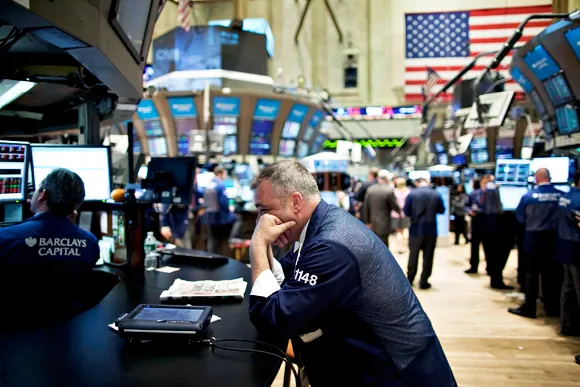
- Indices
- Stocks
S&P 500 and Nasdaq fail to recover
Do you want to know how to make money from this?
Register for free and get expert advice, access to a training course and webinars.
Key points:
- The S&P 500 and Nasdaq Composite ended lower, while the Dow Jones Industrial Average advanced.
- The Cboe Volatility Index hit a 14-week high, signaling increased market jitters.
- Tech giants Alphabet, Meta, Microsoft and Nvidia all fell significantly.
The S&P 500 and Nasdaq Composite indices declined on Thursday, failing to recoup losses incurred during previous sell-offs triggered by a correction in the technology market. Investors continue to analyze possible directions for large capital movements.
The S&P 500 index fell by 27.91 points (0.51%), closing at 5,399.22 points. The Nasdaq Composite lost 160.69 points (0.93%), finishing trading at 17,181.72 points. At the same time, the Dow Jones Industrial Average demonstrated growth, adding 81.20 points (0.20%) and closing at 39,935.07 points.
Mega-cap stocks mostly closed lower
The mega-cap stock market showed mixed dynamics during the trading session. After an uncertain opening, many issuers’ quotes went up, but negative sentiment prevailed by the close of trading. In particular, shares of such technology giants as Meta Platforms, Microsoft and Nvidia ended trading with a noticeable decline in the range from 1.7% to 2.4%.
Alphabet shares continued the decline that began the day before and updated the annual minimum, closing 3.1% below the previous close. In contrast, Tesla showed its shares, which ended trading in the green zone. The weak financial statements published the day before by Google and Tesla negatively affected the entire technology sector, especially the so-called “magnificent seven”. As a result, the Nasdaq and S&P 500 indices showed their worst results since 2022.
The trading session saw increased investor activity due to the publication of financial reports from a number of large companies. IBM shares showed significant growth, adding 4.3% and having a positive impact on the Dow Jones Industrial Average. The positive dynamics of IBM quotes was triggered by the company’s beating analysts’ expectations for second-quarter revenue and raising its forecast for the full-year growth of its software business.
American Airlines also showed positive dynamics, adding 4.2% to its stock price despite cutting its full-year profit forecast. Southwest Airlines rose 5.5%, which was due to the announcement of new changes to its passenger service policy, such as the abolition of the system of free seat selection and the introduction of seats with increased legroom.
In contrast, shares of the automaker Ford Motor Company plunged by 18.4%. The reason for such a sharp decline in quotes was the company’s financial performance for the second quarter, which turned out to be significantly lower than analysts expected.
At the same time, the Dow Jones Industrial Average index maintained its early positive trends and ended trading in the plus, thanks to stronger-than-expected macroeconomic data on US GDP.
In parallel, there was an increase in shares of small-cap companies. Investors, seeking to diversify their portfolios and reduce risks, actively sought value outside the mega-cap segment. The Russell 2000 index, reflecting the dynamics of the small company market, added 1.3%, partially offsetting the losses of the previous trading day.
GDP figures turn out positive
The Cboe Volatility Index, a traditional barometer of Wall Street sentiment, extended its recent rally to a fresh 14-week high, closing at 18.46. The release of U.S. second-quarter GDP data showing economic growth of 2.8% (slightly below the consensus forecast of 2%) failed to reassure investors. The accompanying slowdown in inflation supported expectations for a Federal Reserve rate cut in September.
The market’s focus is on consumer spending data due out on Friday, which will largely determine forecasts for the timing of the Fed’s monetary easing.
While large-cap stocks have driven the market to historic highs this year, recent sell-offs have heightened concerns about the market’s overvaluation and potential turbulence ahead. In response to these concerns, investors have been actively reassessing their portfolios, favoring smaller-cap stocks and other sectors outside the tech giant.
Do you want to know
How to make money from the news
Register for free and get:
- Expert consultation;
- Access to the training course;
- Opportunity to participate in webinars

